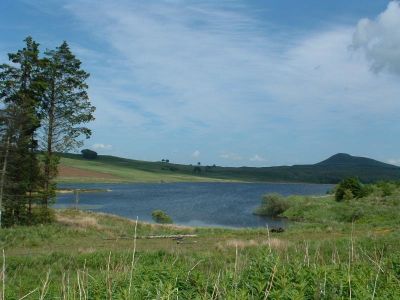
- Details
 There's a lot to be said for experience. With 30 years fishing experience under the belt I've learned a thing or two. Sadly, I've also picked up my fair share of superstition and prejudice along the way.
There's a lot to be said for experience. With 30 years fishing experience under the belt I've learned a thing or two. Sadly, I've also picked up my fair share of superstition and prejudice along the way.
For instance, since first casting a fly into the peaty waters of Sutherland on a fishing holiday some twenty odd years ago, I have firmly held the believe that for a lowlander such as myself to enjoy some first class wild trout fishing he or she must drive at least four hours north in a motor car.
I'm pleased to say that I no longer this belief because this year I discovered Harperleas.
Constructed in 1880, Harperleas is the highest in a network of reservoirs built to supply drinking water to the towns of Kirkcaldy and Dysart some 10 miles to the south. Set in arable land between the Lomond hills near the head of the Lothrie Burn- Harperleas is exactly nine minutes drive followed by a 15 minute walk from my front door. 
Whichever way you approach, you will be rewarded with stunning views of the surrounding hills. Ospreys can be seen passing overhead and Roe deer often congregate around the inlet burn at the west end.
The water as you would expect being public water supply is gin clear and hence I feel that a wind can help the fishing- especially on a bright day. I find bushy flies work best- anything up to a size eight in a wind on a floating or neutral density line pulled through or 45 degrees across the wave. The dry fly can also have its moments on the calmer days although even the slightest ripple can make the difference between catching or not.
The trout themselves are simply perfect. Loch Leven like in appearance, either naturally being just a few miles away or by some ancient stocking, they are bright, spotted with golden flanks through silver with golden sometimes olive fins. They average a rather respectable ½ pound and it is not uncommon to catch one or two around the pound and a half mark in a session. My seasons best was a fish of 3 ½ pounds although I have seen larger fish rising which leave me only guessing at their weight.
No two sessions are ever the same. One can be rewarded one day with a catch of 25+ and yet hardly see a fish move the very next day, although perseverance is normally rewarded with at least one or two.
Fly life is abundant and the best rises are triggered by Caenis hatches which are prolific on calm evenings. It is precisely then that the fishing can become extremely challenging. I have found that a walk around the shoreline in search of a ripple can pay off in such conditions however, my regular fishing companion has had some success during a Caenis induced rise by tying on a small dry greenwells and waiting.
Waders are recommend though wading is not- being an active public water supply water levels can fluctuate and when the water level is low the bank is muddy and tricky.
Permission is granted from the porta-cabin on the shore of Holl reservoir and prices for the 2010 season were £10 per day/ 50 for a season ticket and is catch and release only.
Brian Morrison has been fishing and fly tying for nearly thirty years and is happiest whilst tripping through the heather in northern Sutherland by the side of some unpronounceable loch.


